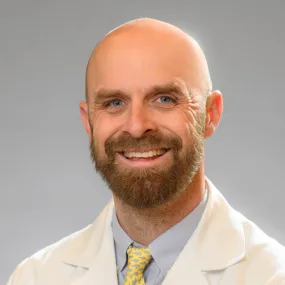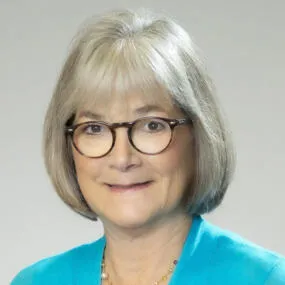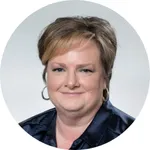How Ochsner Health Integrated Palliative Care Training into Its Medical School Curriculum

We always begin our palliative care lecture for fourth-year medical students with a loss exercise.
It starts with a prompt: imagine being diagnosed with non-Hodgkin’s lymphoma and feeling the shock of receiving this news as a young adult. We walk students through what comes next—financial strain, chemotherapy, radiation, medication side effects, anxiety about prognosis, setbacks, disease progression, and the impact on families and relationships.
Many students find this exercise to be unexpectedly powerful; one that lingers with them. Some are brought to tears. This experience underscores the reality that anyone can become seriously ill, and everyone deserves access to the benefits of palliative care. That’s exactly what we want our students to carry with them as they begin their medical careers.
"This experience underscores the reality that anyone can become seriously ill, and everyone deserves access to the benefits of palliative care."
How We Educate Our Medical Students About Palliative Care
Medical schools have a unique opportunity—and responsibility—to teach foundational palliative care principles. The need is clear: research shows increasing demand for quality palliative care education. Yet in the U.S, medical schools vary widely in how—or whether—they include it in their curricula.
"This gap needs to be addressed at a systems level. But we can start small for now by integrating palliative care education within our individual organizations."
This gap needs to be addressed at a systems level. But we can start small for now by integrating palliative care education within our individual organizations.
We’ve done this at Ochsner Health through a collaboration with the University of Queensland Medical School (Australia). Our students spend their first two years in Brisbane; when they arrive in New Orleans for clinical training (years three and four), we’re fortunate that they’ve already been introduced to palliative care. We build upon this foundation through their clinical rotations.
Our expanded curriculum began about six years ago, when Ochsner committed to being more intentional about educating medical students in palliative care.
How We Structured Our Program
In year three, students have direct exposure to our palliative medicine specialists during their core clinical rotations. The experience is highlighted by joining the team on consults and observing interactions with patients and their families.
Year four is taught by physician members of our palliative medicine faculty. This training equips students with advance care planning and communication skills, both of which are essential to caring for people with serious illness, and their families—regardless of their eventual specialty.
Training and Rotations
We also assign our students a curated list of nineteen clinical training modules, screening tools, clinical games, podcasts, and more, through CAPC Training Assignments. The goal is to provide our students with the skills and tools they need to deliver the highest-quality, compassionate, evidence-based care. Many students go beyond the required training and continue to access CAPC training after their rotations end.
On average, sixteen students each year choose to complete a palliative care elective as part of this rotation. During this six-week period, they become part of the inpatient consult team and participate in the multiple interdisciplinary outpatient clinics for serious illness of which we provide an embedded presence. As part of the inpatient experience, students are expected to function as an active member of the interdisciplinary team, directly interview patients and families using evidence-based communication tools (e.g., Respecting Choices and the Serious Illness Conversation Guide), and perform consultations for symptom management.
All fourth-year students also rotate through the medical ICU. During this required rotation, they attend multiple training sessions, including two lectures led by palliative care physicians, Drs. Nelson and Morel, which focus on real-world, real-life applications of advance care planning. Students share cases and reflect on how early, honest conversations can change the trajectory of patient care.
Aside from medicals students, Ochsner requires all second-year residents to complete an in-person course, Shared Decision-Making in Serious Illness. This course is also open to all physicians and advanced practice providers, and we hope to eventually include it as part of our orientation.
A Lasting Impact
Ultimately, we want students to understand that good medical care is more than treating disease—it’s about caring for people.
We’ve received consistent, positive feedback. Many students tell us, “I didn’t know what I didn’t know,” especially after the palliative care elective. They begin to approach the physician-patient relationship differently—and that shift stays with them, regardless of their specialty.
"Ultimately, we want students to understand that good medical care is more than treating disease—it’s about caring for people."
One fourth-year student put it this way: “Medical school taught me how to treat illness. The palliative care rotation taught me how to talk to patients.” She suggested all fourth-year students experience this kind of training. We couldn’t agree more.
Palliative care education also offers a practical benefit: our students stand out when applying for residency by including their CAPC Designations on their CVs. They tell us it often comes up in interviews—and helps set them apart.
How to Incorporate Palliative Care Training into Your Medical School Curriculum
We know medical school curricula are packed—but you don’t have to overhaul everything to make space for palliative care. Consider starting with an elective, guest lectures, a speaker series, webinars, or CAPC online courses. If your institution is a CAPC member your students may already have access to the full training library, which can be assigned to your students at no additional cost.
4 Steps to Get Started
If you have the room in your curriculum to add or expand its palliative care education, here’s our advice.
1. Get buy-in from your administration.
With your leadership’s support, it will be much easier to launch an initiative.
2. Make the case to students.
Show how palliative care skills are valuable in every field of medicine.
3. Offer CAPC modules.
Incentivize completion with recognition or built-in curriculum credit.
4. Start small, then grow.
Once a foundation is in place, it’s easier to build on with additional offerings.
By integrating palliative care into the medical school curriculum, we help students develop the essential, core palliative care skills—like having honest conversations, navigating uncertainty, and supporting patients and families—that they’ll use throughout their career. Ultimately, palliative care is good medical care. All clinicians have a responsibility to care for patients and their loved ones to the absolute best of their ability, and palliative care training can help them achieve that goal.
"By integrating palliative care into the medical school curriculum, we help students develop the essential, core palliative care skills ... they’ll use throughout their career."

Be the first to read articles from the field (and beyond), access new resources, and register for upcoming events.
SubscribeEdited by Melissa Baron. Clinical review by Andrew Esch, MD, MBA.



